Hurricane Ian left an extraordinarily broad path of destruction across much of South Florida. That was evident in reports from the ground, but it also shows up in satellite data. Using a new method, our team of spatial and environmental analysts was able to quickly provide a rare big picture view of damage across the entire state.
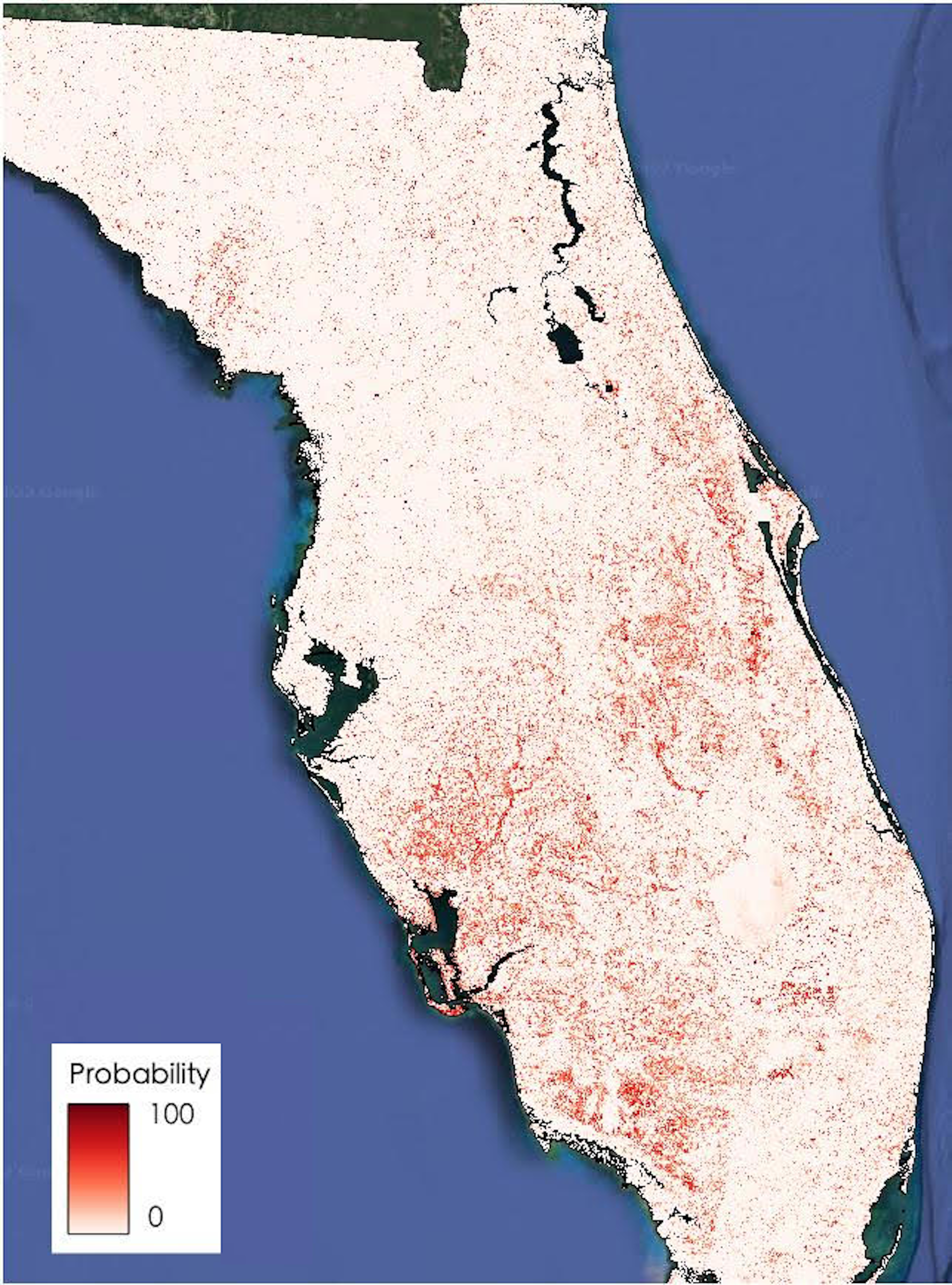 Satellite images and artificial intelligence reveal Hurricane Ian’s widespread damage. The dark areas have a high probability of damage. Su Ye
Satellite images and artificial intelligence reveal Hurricane Ian’s widespread damage. The dark areas have a high probability of damage. Su Ye
By using satellite images from before the storm and real-time images from four satellite sensors, together with artificial intelligence, we created a disaster monitoring system that can map damage in 30-meter resolution and continuously update the data.
It’s a snapshot of what faster, more targeted disaster monitoring can look like in the future – and something that could eventually be deployed nationwide.
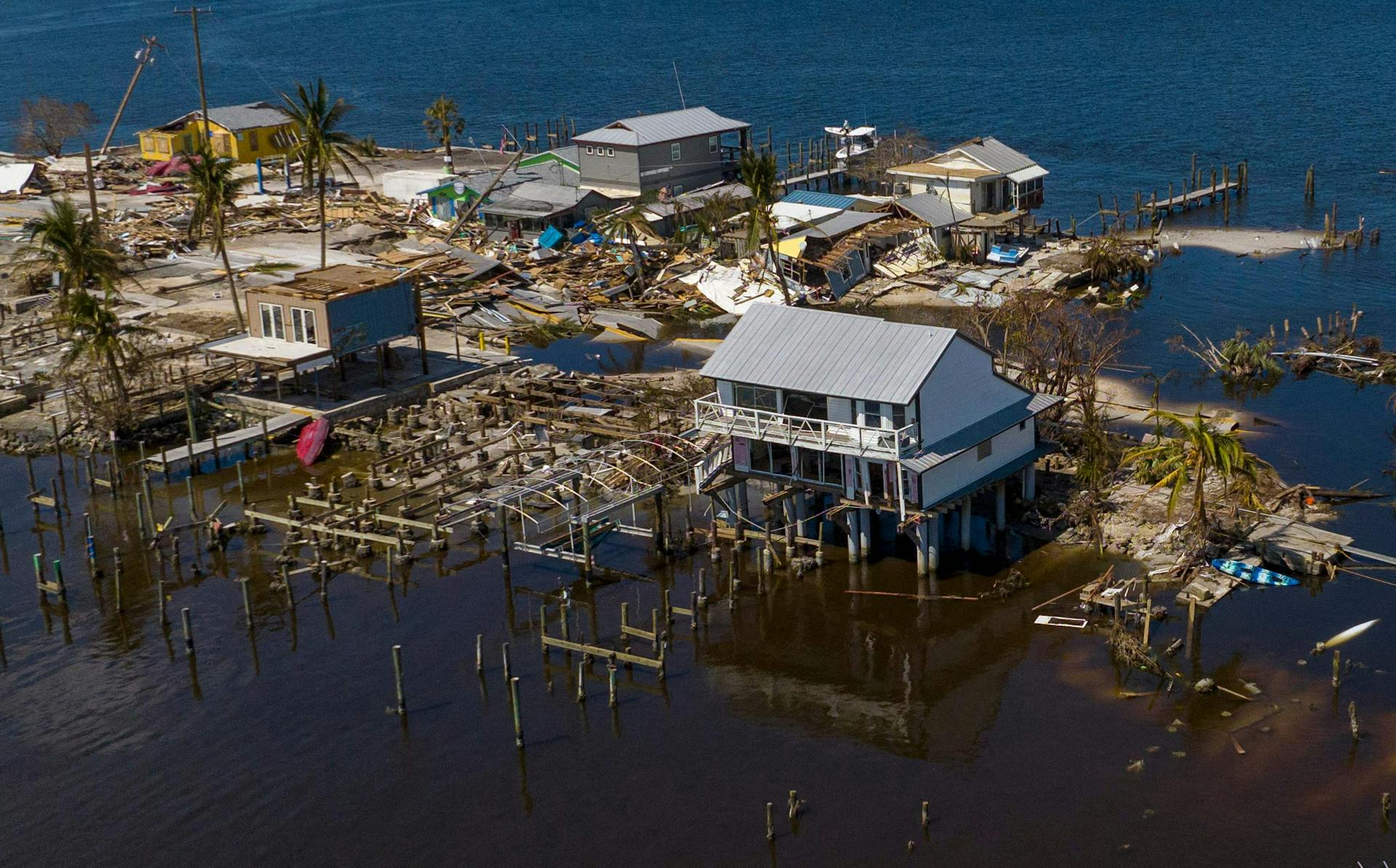 New satellite mapping techniques can quickly locate washed out and damaged areas. Ricardo Arduengo / AFP via Getty Images
New satellite mapping techniques can quickly locate washed out and damaged areas. Ricardo Arduengo / AFP via Getty Images
How artificial intellegence spots the damage
Satellites are already used to identify high-risk areas for floods, wildfires, landslides and other disasters, and to pinpoint the damage after these disasters. But most satelite-based disaster management approaches rely on visually assessing the latest images, one neighborhood at a time.
Our technique automatically compares pre-storm images with current satellite images to spot anomalies quickly over large areas. Those anomalies might be sand or water where that sand or water shouldn’t be, or heavily damaged roofs that don’t match their pre-storm appearance. Each area with a significant anomaly is flagged in yellow.
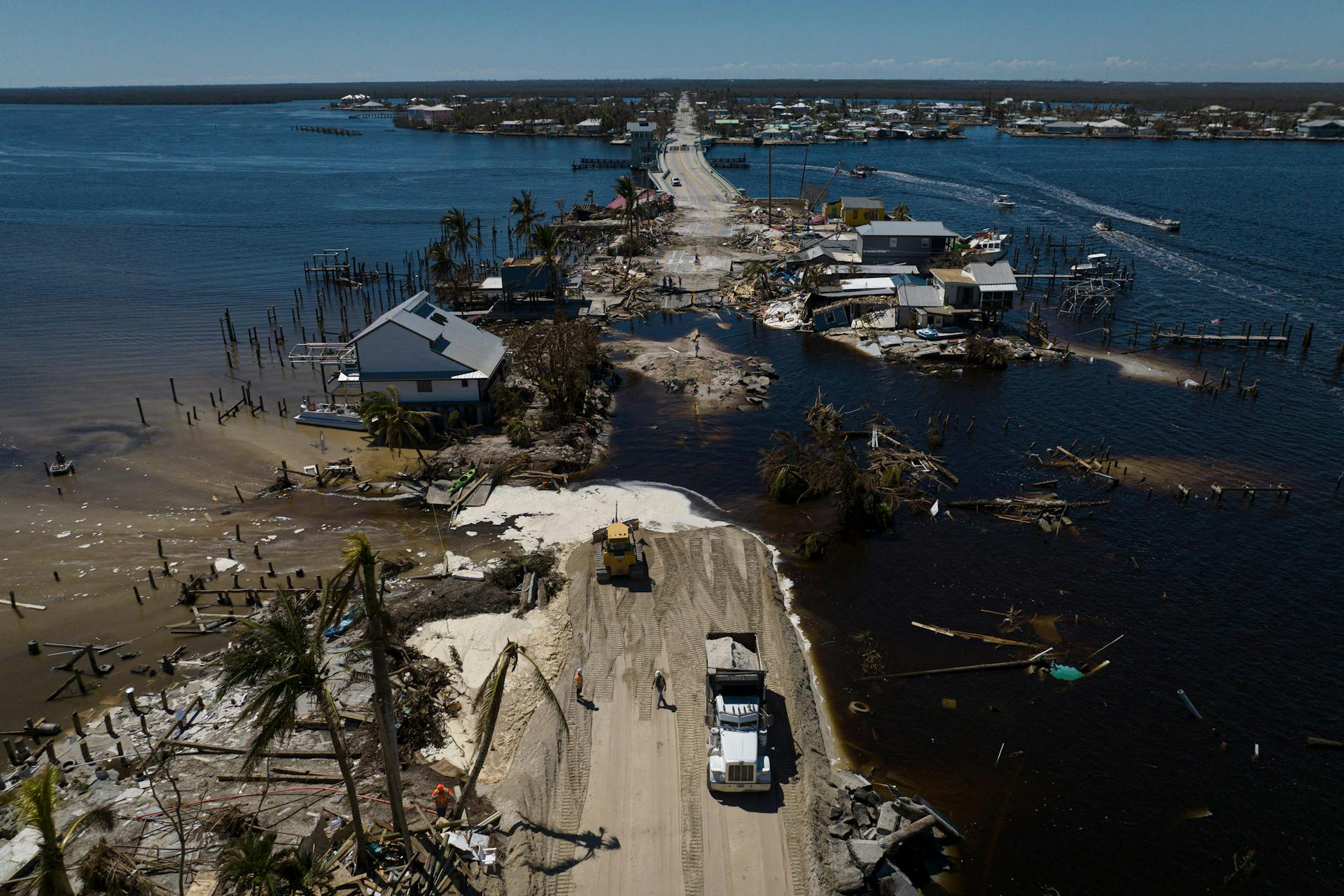 A dump truck works to repair a washed out road after Hurricane Ian hit Matlacha, Florida, on Oct. 3, 2022. Ricardo Arduengo/AFP via Getty Images
A dump truck works to repair a washed out road after Hurricane Ian hit Matlacha, Florida, on Oct. 3, 2022. Ricardo Arduengo/AFP via Getty Images
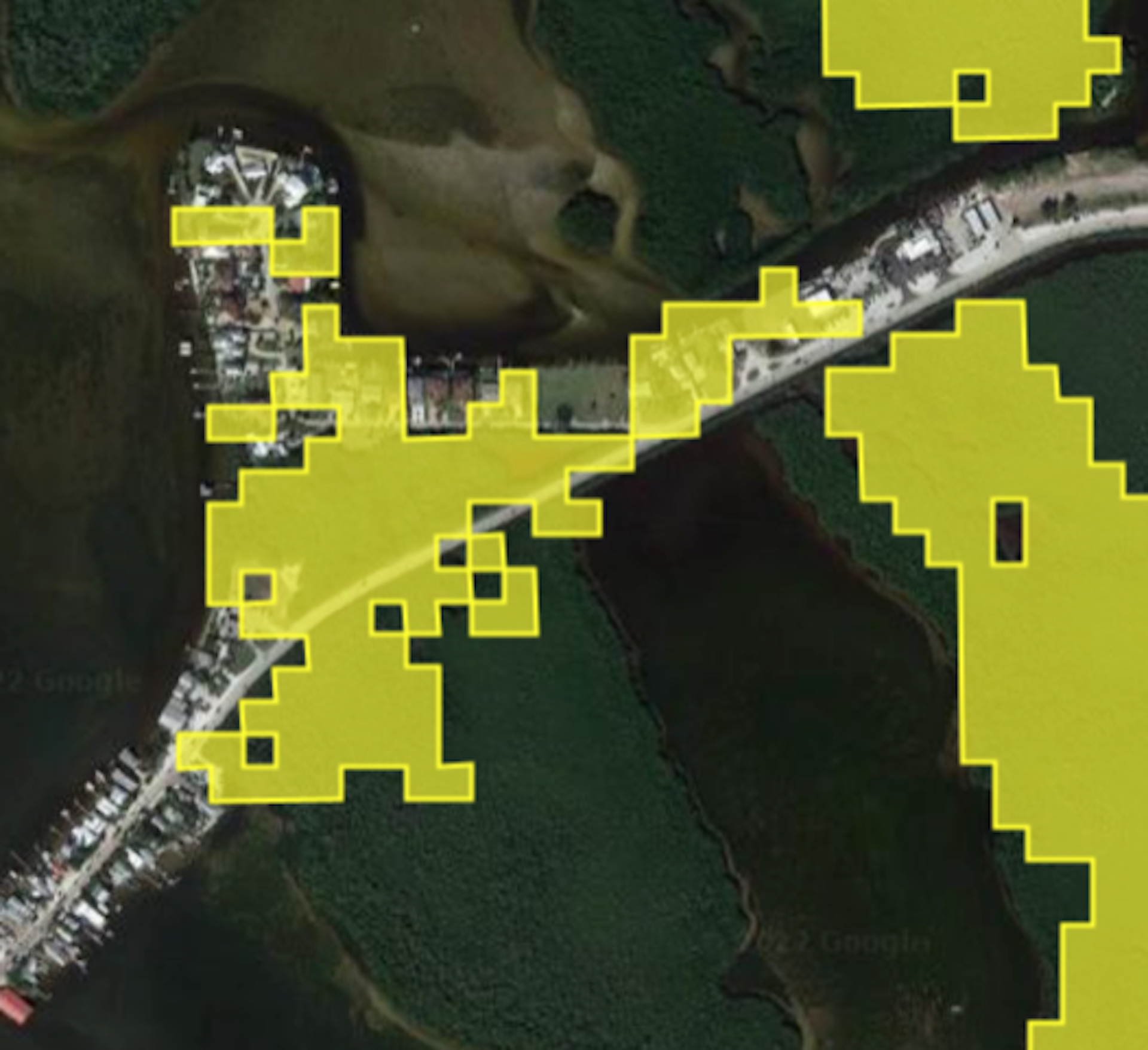
Damage detected in the same area of Matlacha as in the photo. Su Ye
Five days after Ian lashed Florida, the map showed yellow alert polygons all over South Florida. We found that it could spot patches of damage with about 84% accuracy.
A natural disaster like a hurricane or tornado often leaves behind large areas of spectral change at the surface, meaning changes in how light reflects off whatever is there, such as houses, ground or water. Our algorithm compares the reflectance in models based on pre-storm images with reflectance after the storm.
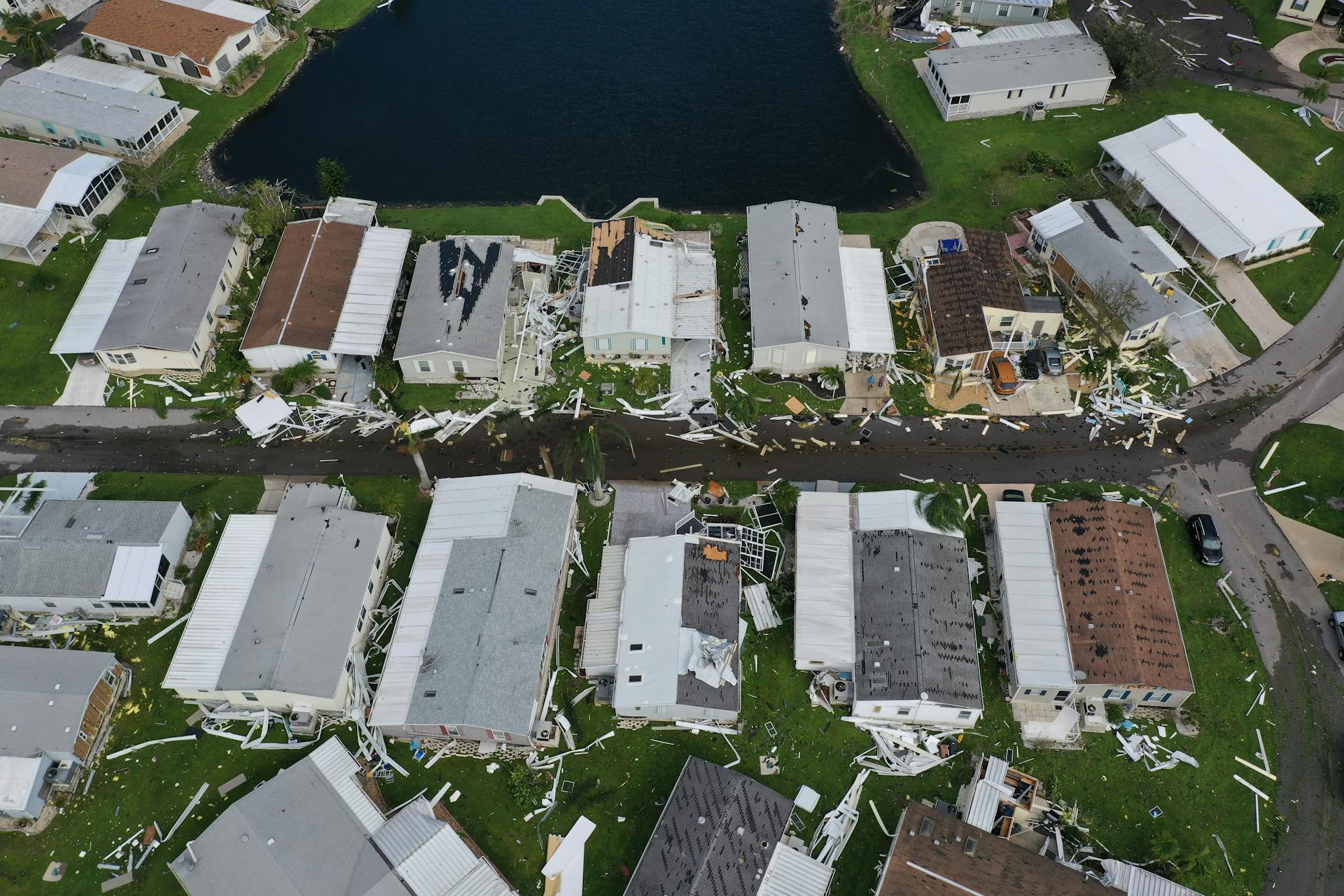 Punta Gorda, Florida, was hit by storm surge and high winds from Hurricane Ian. Win McNamee/Getty Images
Punta Gorda, Florida, was hit by storm surge and high winds from Hurricane Ian. Win McNamee/Getty Images
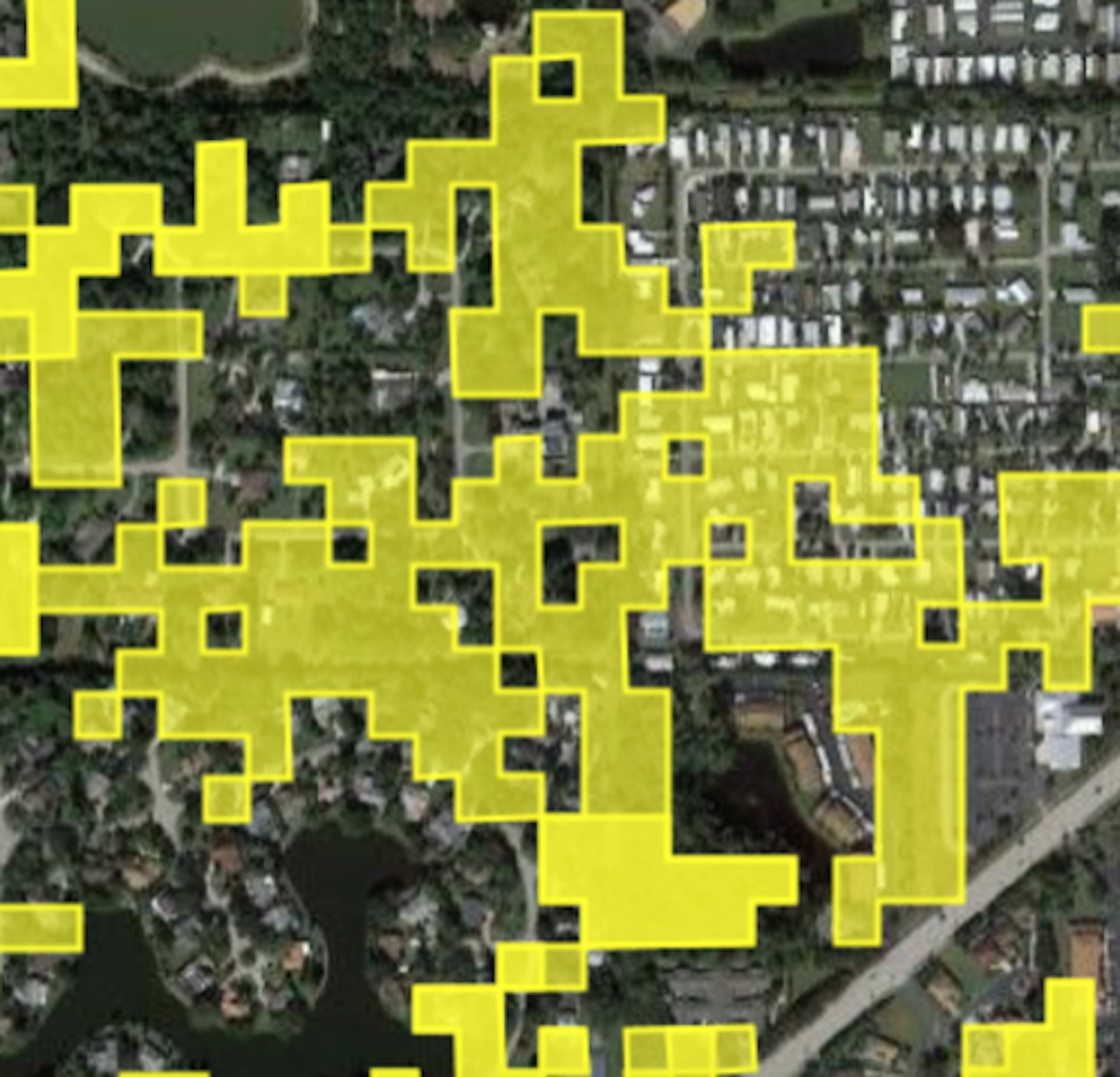
Damage in the same part of Punta Gorda shown in the photo. Su Ye
The system spots both changes in physical properties of natural areas, such as changes in wetness or brightness, and the overall intensity of the change. An increase in brightness often is related to exposed sand or bare land due to hurricane damage.
Using a machine-learning model, we can use those images to predict disturbance probabilities, which measures the influences of natural disaster on land surfaces. This approach allows us to automate disaster mapping and provide full coverage of an entire state as soon as the satellite data is released.
The system uses data from four satellites, Landsat 8 and Landsat 9, both operated by NASA and the U.S. Geological Survey, and Sentinel 2A and Sentinel 2B, launched as part of the European Commission’s Copernicus program.
Real-time monitoring, nationwide
Extreme storms with destructive flooding have been documented with increasing frequency over large parts of the globe in recent years.
While disaster response teams can rely on airplane surveillance and drones to pinpoint damage in small areas, it’s much harder to see the big picture in a widespread disaster like hurricanes and other tropical cyclones, and time is of the essence. Our system provides a fast approach using free government-produced images to see the big picture. One current drawback is the timing of those images, which often aren’t released publicly until a few days after the disaster.
We are now working on developing near real-time monitoring of the whole conterminous United States to quickly provide the most up-to-date land information for the next natural disaster.
___
Zhe Zhu receives funding from the USGS-NASA Landsat Science Team Program for Toward Near Real-time Monitoring and Characterization of Landsat Surface Change for the Conterminous US (140G0119C0008)
Su Ye does not work for, consult, own shares in or receive funding from any company or organisation that would benefit from this article, and has disclosed no relevant affiliations beyond their academic appointment.
___
Photos: Aerial images show devastation left by Hurricane Ian across Florida

Damaged homes and debris are shown in the aftermath of Hurricane Ian, Thursday, Sept. 29, 2022, in Fort Myers Beach, Fla. (AP Photo/Wilfredo Lee)

This aerial photo shows damaged homes and debris in the aftermath of Hurricane Ian, Thursday, Sept. 29, 2022, in Fort Myers, Fla. (AP Photo/Wilfredo Lee)

This aerial photo shows damaged homes and debris in the aftermath of Hurricane Ian, Thursday, Sept. 29, 2022, in Fort Myers, Fla. (AP Photo/Wilfredo Lee)

A damaged home and debris is seen in the aftermath of Hurricane Ian, Thursday, Sept. 29, 2022, in Fort Myers Beach, Fla. (AP Photo/Wilfredo Lee)

A damaged causeway to Sanibel Island is seen in the aftermath of Hurricane Ian , Thursday, Sept. 29, 2022, near Sanibel Island, Fla. (AP Photo/Wilfredo Lee)

Damaged homes are seen in the aftermath of Hurricane Ian, Thursday, Sept. 29, 2022, in Fort Myers Beach, Fla. (AP Photo/Wilfredo Lee)

Damaged homes are seen in the aftermath of Hurricane Ian, Thursday, Sept. 29, 2022, in Fort Myers Beach, Fla. (AP Photo/Wilfredo Lee)

Damaged ships and debris is seen in the aftermath of Hurricane Ian, Thursday, Sept. 29, 2022, in Fort Myers, Fla. (AP Photo/Wilfredo Lee)

Smoldering homes are seen in the aftermath of Hurricane Ian, Thursday, Sept. 29, 2022, in Fort Myers Beach. Fla. (AP Photo/Wilfredo Lee)

Area where homes once stood is seen in the aftermath of Hurricane Ian, Thursday, Sept. 29, 2022, in Fort Myers Beach, Fla. (AP Photo/Wilfredo Lee)

Damaged boats lie on the land and water in the aftermath of Hurricane Ian, Thursday, Sept. 29, 2022, in Fort Myers Beach, Fla. (AP Photo/Wilfredo Lee)

Damaged boats lie on the land and water in the aftermath of Hurricane Ian, Thursday, Sept. 29, 2022, in Fort Myers, Fla. (AP Photo/Wilfredo Lee)

A man walks through a street among damaged homes and businesses and debris in Fort Myers Beach, Fla., on Thursday, Sep 29, 2022, following Hurricane Ian. (Douglas R. Clifford/Tampa Bay Times via AP)

Damaged homes and businesses are seen in Fort Myers Beach, Fla., on Thursday, Sep 29, 2022, following Hurricane Ian. (Douglas R. Clifford/Tampa Bay Times via AP)

Boats lay wrecked and piled up at Diversified Yacht Services in Fort Myers Beach, Fla., on Thursday, Sep 29, 2022, following Hurricane Ian. (Douglas R. Clifford/Tampa Bay Times via AP)

Damaged boats and structures are seen in the aftermath of Hurricane Ian, Thursday, Sept. 29, 2022, in Fort Myers Beach, Fla. (AP Photo/Wilfredo Lee)

The remnant of a pier is seen in the wake of Hurricane Ian, Thursday, Sept. 29, 2022, in Fort Myers Beach, Fla. (AP Photo/Wilfredo Lee)

Commercial business are seen in the wake of Hurricane Ian, Thursday, Sept. 29, 2022, in Fort Myers Beach, Fla. (AP Photo/Wilfredo Lee)

A home burns on Sanibel Island in the wake of Hurricane Ian, Thursday, Sept. 29, 2022, in Fla. (AP Photo/Wilfredo Lee)

A home burns on Sanibel Island in the wake of Hurricane Ian, Thursday, Sept. 29, 2022, in Fla. (AP Photo/Wilfredo Lee)

A home burns on Sanibel Island in the wake of Hurricane Ian, Thursday, Sept. 29, 2022, in Fla. (AP Photo/Wilfredo Lee)

Homes under construction are seen missing their roofs in the wake of Hurricane Ian, Thursday, Sept. 29, 2022, on Sanibel Island, Fla. (AP Photo/Wilfredo Lee)

Damagd homes are seen in the aftermath of Hurricane Ian, Thursday, Sept. 29, 2022, in Fort Myers Beach, Fla. (AP Photo/Wilfredo Lee)

A section of the Sanibel Causeway was lost due to the effects of Hurricane Ian, Thursday, Sept. 29, 2022, in Fort Myers, Fla. (AP Photo/Steve Helber)

Boats are stacked up against the Port Sanibel Marina Motel after Hurricane Ian ran through the area, Thursday, Sept. 29, 2022, in Fort Meers, Fla. (AP Photo/Steve Helber)

Damaged structures are seen in the wake of Hurricane Ian, Thursday, Sept. 29, 2022, in Fort Myers Beach, Fla. (AP Photo/Wilfredo Lee)

Damaged boats are seen in the wake of Hurricane Ian, Thursday, Sept. 29, 2022, in Fort Myers Beach, Fla. (AP Photo/Wilfredo Lee)

Livestock move in a flooded field in the aftermath of Hurricane Ian, Thursday, Sept. 29, 2022, on Sanibel Island, Fla. (AP Photo/Wilfredo Lee)

Damaged homes are seen in the wake of Hurricane Ian, Thursday, Sept. 29, 2022, on Sanibel Island, Fla. (AP Photo/Wilfredo Lee)

Damaged and missing homes are seen in the wake of Hurricane Ian, Thursday, Sept. 29, 2022, in Fort Myers Beach, Fla. (AP Photo/Wilfredo Lee)

A mobile home community that sustained wind damage caused by Hurricane Ian is seen in this aerial view, Thursday, Sept. 29, 2022, in Fort Myers, Fla. (AP Photo/Marta Lavandier)

Power company crew trucks drive on a flooded street on their way to help communities impacted by Hurricane Ian, Thursday, Sept. 29, 2022, in Fort Myers, Fla. (AP Photo/Marta Lavandier)

Homes that sustained wind damage caused by Hurricane Ian are seen in this aerial view, Thursday, Sept. 29, 2022, in Fort Myers, Fla. (AP Photo/Marta Lavandier)

A mobile home community sustained damage caused by Hurricane Ian as seen in this aerial view, Thursday, Sept. 29, 2022, in Fort Myers, Fla. (AP Photo/Marta Lavandier)

Homes are surrounded by flood waters caused by Hurricane Ian, Thursday, Sept. 29, 2022, in Fort Myers, Fla. (AP Photo/Marta Lavandier)

A mobile home community sustained wind damage caused by Hurricane Ian, Thursday, Sept. 29, 2022, in Fort Myers, Fla. (AP Photo/Marta Lavandier)

A marina sustained damage caused by Hurricane Ian, Thursday, Sept. 29, 2022, in Barefoot Beach, Fla. (AP Photo/Marta Lavandier)

Damage caused by Hurricane Ian is seen in this aerial view, Thursday, Sept. 29, 2022, in Barefoot Beach, Fla. (AP Photo/Marta Lavandier)

Debris is piled up at the end of a cove following heavy winds and storm surge caused by Hurricane Ian Thursday, Sept. 29, 2022, in Barefoot Beach, Fla. (AP Photo/Marta Lavandier)

A damaged causeway to Florida’s Sanibel Island is seen in the aftermath of Hurricane Ian on Thursday, Sept. 29, 2022. (AP Photo/Wilfredo Lee)

A mobile home community sustained wind damage caused by Hurricane Ian, Thursday, Sept. 29, 2022, in Fort Myers, Fla. (AP Photo/Marta Lavandier)

In this photo taken by a drone, shrimping boats and powerboats lie strewn atop homes after the passage of Hurricane Ian, on San Carlos Island, in Fort Myers Beach, Fla., Thursday, Sept. 29, 2022. (AP Photo/Rebecca Blackwell)

In this photo taken by a drone, boats lie scattered amidst mobile homes after the passage of Hurricane Ian, on San Carlos Island, in Fort Myers Beach, Fla., Thursday, Sept. 29, 2022. (AP Photo/Rebecca Blackwell)

In this photo taken by a drone, damaged mobile homes lie scattered after the passage of Hurricane Ian, on San Carlos Island, in Fort Myers Beach, Fla., Thursday, Sept. 29, 2022. (AP Photo/Rebecca Blackwell)

In this photo taken by a drone, the two-story Getaway Marina building, front, lies reduced to rubble as displaced boats rest along the roadside and a trailer park, at top, lies nearly devoid of homes, following the passage of Hurricane Ian, on San Carlos Boulevard in Fort Myers Beach, Fla., Thursday, Sept. 29, 2022. (AP Photo/Rebecca Blackwell)

Cars drive on a flooded street caused by Hurricane Ian Thursday, Sept. 29, 2022, in Fort Myers, Fla. Climate change added at least 10% more rain to Hurricane Ian, a study prepared immediately after the storm shows. (AP Photo/Marta Lavandier)

Rescue personnel search a flooded trailer park after Hurricane Ian passed by the area Thursday, Sept. 29, 2022, in Fort Myers, Fla. (AP Photo/Steve Helber)

Receding floodwaters surround homes near downtown, one day after the passage of Hurricane Ian, in Fort Myers, Fla., Thursday, Sept. 29, 2022. (AP Photo/Rebecca Blackwell)

Displaced boats rest lie strewn along the San Carlos Boulevard, one day of the passage of Hurricane Ian, in Fort Myers Beach, Fla., Thursday, Sept. 29, 2022. (AP Photo/Rebecca Blackwell)

A section of the Sanibel Causeway was lost due to the effects of Hurricane Ian Thursday, Sept. 29, 2022, in Fort Myers, Fla. (AP Photo/Steve Helber)











